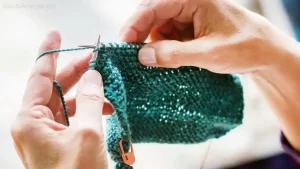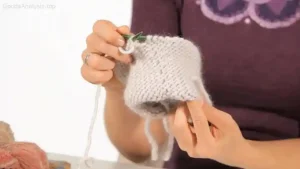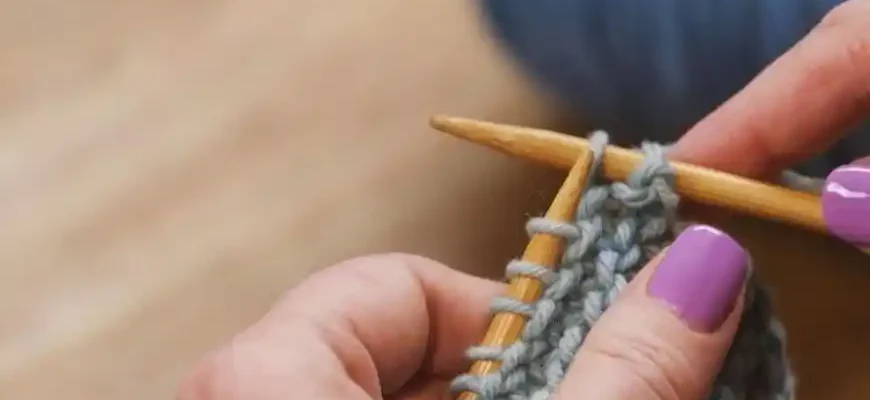Knitting is a craft that has been around for centuries, offering both a creative outlet and a practical way to make things with your hands. Whether you’re looking to knit a cozy sweater, a colorful scarf, or simply want a calming hobby to unwind, knitting can offer numerous benefits—mental, emotional, and even physical.
If you’re over 50 or just someone who loves learning new things, you might be wondering: where do I start? You’re in the right place. I’m here to break it all down in a friendly, easy-to-understand way. We’ll dive into the basics, some useful tips, and even point out a few pitfalls to avoid. And don’t worry—knitting isn’t just for the “crafty” types. It’s for anyone who’s willing to pick up a pair of needles and give it a try.
Why Start Knitting?
Before we jump into the how, let’s talk about the why. Why is knitting so popular, and why should you consider giving it a go?
- Relaxation and Stress Relief
Studies, such as one from the British Journal of Occupational Therapy, show that knitting can reduce anxiety and stress. The repetitive motion of knitting allows the brain to focus on a simple task, which is a great way to take your mind off of worries and relax. - Cognitive Benefits
Knitting engages your brain in multiple ways: it requires concentration, memory, and hand-eye coordination. This mental workout can help keep your brain sharp as you age. - Sense of Accomplishment
There’s something incredibly satisfying about finishing a knitting project, especially when it’s something you can wear or use. It’s a real tangible result of your effort. - Physical Benefits
Believe it or not, knitting can be good for your hands. It helps improve fine motor skills and can be a great way to prevent joint stiffness. It’s even been used in some therapeutic settings to help with conditions like arthritis.
But like with anything, there are challenges. It’s not always easy, and not every project will turn out perfectly. But that’s part of the fun—and it’s why I’m here to help guide you through the process.
Knitting Basics: The Need-to-Know Information
Let’s break down the very first steps to get you on your way.
1. Choosing Your Yarn and Needles
The right materials make all the difference, especially when you’re just starting out. Here’s what to keep in mind:
- Yarn: Yarn comes in many thicknesses, or “weights,” ranging from lace weight (super fine) to bulky. For beginners, I recommend starting with a medium-weight yarn (worsted), which is a good all-rounder for most patterns.
- Needles: Knitting needles come in various materials (wood, metal, plastic) and sizes. US size 8 (5mm) is a good starting point for most worsted weight yarns. Your choice of needle material affects the speed and feel of knitting. Wood needles are slower and “grippier,” while metal needles can be faster and more slippery.
2. Basic Stitches
There are two main stitches you’ll start with:
- The Knit Stitch: This is the foundational stitch of knitting. It’s simple to learn and forms a smooth fabric.
- The Purl Stitch: This stitch is essentially the opposite of the knit stitch. It gives fabric a different texture and is often used together with the knit stitch in patterns.

A combination of these two stitches creates various patterns, from simple garter stitch (knit every row) to more complex ribbing or even cables.
3. Casting On and Binding Off
To begin any project, you’ll need to “cast on,” which is how you get your first row of stitches on the needle. It might seem tricky at first, but once you get the hang of it, it’s a piece of cake.
At the end of your project, you’ll “bind off” your stitches to secure your work and prevent it from unraveling.
4. The Learning Curve
Let’s be honest: learning to knit can be a bit like learning to ride a bike. The first few rows may seem clumsy, and you might make a few mistakes (trust me, we all do!). Don’t get discouraged. The key is patience. You’ll improve with each row.
5. Tools and Accessories
While yarn and needles are essential, a few extras can make your knitting life easier:
- Stitch markers to keep track of patterns.
- Tapestry needles for weaving in loose ends.
- Row counters to help track how many rows you’ve done.
Common Pitfalls and How to Avoid Them
Knitting is rewarding, but there are a few challenges that beginners often encounter. Here’s how to navigate them:
1. Dropped Stitches
A dropped stitch happens when a stitch comes off the needle, and you can no longer see it in your work. It’s frustrating, but it’s fixable. Just use a crochet hook to pick up the stitch and bring it back onto your needle.
2. Tension Issues
Your tension (how tightly or loosely you hold the yarn) is important in knitting. If your stitches are too tight, it can be difficult to move the needles; too loose, and your project may look sloppy. The solution is practice. Once you find a rhythm, your tension will naturally improve.
3. Boring Projects
Let’s face it, knitting a whole scarf in plain garter stitch can get a bit dull after a while. Try to pick projects that keep you engaged. Small, manageable projects like a dishcloth or a pair of fingerless mitts are great beginner options that don’t take too long to finish.

4. Frustration
Knitting can be frustrating at times, especially when things aren’t going as planned. It’s a good idea to take breaks when you start feeling stuck. Sometimes stepping away and coming back with fresh eyes makes all the difference.
Knitting and Your Health: More Than Just a Craft
Beyond being a fun hobby, knitting has some serious health benefits. It has been shown to:
- Reduce Symptoms of Depression and Anxiety: Knitting provides a meditative quality that helps calm the mind. For many, it’s like a form of mindfulness meditation.
- Increase Cognitive Function: Because knitting requires focus and dexterity, it’s a great exercise for the brain, helping to keep your memory and concentration sharp.
- Physical Rehabilitation: People recovering from hand injuries or surgery often use knitting as a way to rebuild hand strength and dexterity. It’s a low-impact way to engage the muscles.
Real-Life Opinions on Knitting
Let’s take a look at what people around the world have to say about knitting:
- Jill, 58, USA:
“I started knitting to help with stress. At first, I thought it was going to be too complicated, but now I love it! Knitting has really helped me relax after a long day, and I’ve even made a few scarves for friends.” - Mika, 42, Japan:
“Knitting is a great way to pass time. I do it while watching TV, and it helps me stay mindful. The best part? I’m creating something with my own hands. It’s very fulfilling.” - Carlos, 67, Spain:
“I took up knitting after my wife suggested it. I’ll admit, I didn’t think I would enjoy it. But now I knit every evening. It’s a peaceful hobby, and my grandchildren love the little toys I make for them.” - Ayesha, 34, India:
“I started knitting when I was pregnant, looking for something to keep me occupied. I’ve since made blankets, mittens, and even a sweater for my baby. It’s a relaxing and productive way to spend time.” - Tom, 70, UK:
“I’ve been knitting for over 50 years. It’s not just about making things—it’s about taking time for myself. It helps me unwind and focus, and I’ve passed the skill down to my kids and grandkids.”
Conclusion
Knitting is a wonderful hobby that anyone can learn, regardless of age or experience. It offers physical, mental, and emotional benefits, and the sense of satisfaction from completing a project is hard to beat. Remember, it’s okay to make mistakes—just like in life. Keep practicing, and before you know it, you’ll be creating beautiful knitted pieces that you can be proud of.









